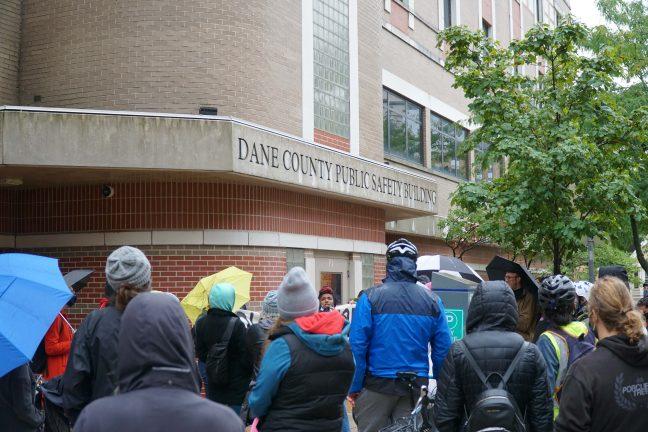A new ten year report on race and equity within Dane County revealed disparities between Black and white individuals.
“Race to Equity: A Baseline Report on the State of Racial Disparities in Dane County,” comes ten years after the first baseline race and equity report created by Kids Forward, a Wisconsin policy center dedicated to advocating for people of color. The 2023 report seeks to understand the root cause of racial disparities through quantitative and qualitative data in the form of conversations with Dane County community members.
In response to the new report, Mayor Satya Rhodes-Conway issued a statement which said the city’s ability to respond to some of the solutions proposed in the report is affected by state laws.
Affordable housing development on Gorham Street moves forward
“Our ability to address the inequities created by past and continuing structural racism is greatly impeded by state laws that prohibit Madison from taking many of the measures called for in the report,” Rhodes-Conway said in the statement. “The City cannot enact a local living wage ordinance, cannot require paid sick days, and cannot protect tenants’ rights. As the report notes, the impacts of these state restrictions disproportionately impact poor and minority residents.”
The report highlights disparities within the economic well-being, health and education sectors in Dane County, which Kids Forward said are the root causes of inequity. According to the report, by focusing on the source of the problem, Kids Forward can understand how racism can turn into Black-white disparities.
The authors recognized that while data on youth justice, child welfare and adult justice can serve as important sources of information for advocates and community leaders, they did not focus on these factors in the report. According to the report, these data sources can do more harm than good if not properly contextualized.
Kids Forward Senior Racial Equity Policy Analyst Carte’cia Lawrence said one of the largest differences between the 2013 and 2023 reports is the qualitative data the new report contains. Through conversations with community members, the team was able to pinpoint specific areas of concern and tailor their research efforts to focus on the most pressing issues. The community-driven approach ensured the report was both relevant and responsive to the actual needs and experiences of those most affected by the disparities.
“This 10-year report really does strive to capture both quantitative and qualitative data in a way that is community driven and centered,” Lawrence said. “That was our goal — to have these community conversations and really grasp what community members were saying, what they were struggling with in the issues that were important to them and then find the data to support the issues that they that they told us that they wanted us to highlight when talking about racial equity in the community.”
In addition to these community conversations, the report contains a wealth of quantitative information. According to the section of the report covering economic well-being, Black Dane County residents are four times less likely to own homes than white residents, regardless of their income level. Between 2016-2020, Black Dane County residents were 2.7 times more likely to be impoverished than white residents.
The education section of the report examined topics from school funding to student mental health. Demographic mismatch, as one researcher called it, is one aspect of Dane County’s school system that perpetuates educational inequality. While 10% of Dane County students are Black, only 4% of teachers are Black. This type of mismatch can have long-lasting consequences. According to the report, simply having a Black teacher for one year in first grade can positively impact Black students’ long-term educational attainment.
According to the report, poverty, trauma and a lack of Black educators can make the learning environment harder for Black students. About 6.4% of Dane County’s Black eighth graders were considered “proficient in math,” as opposed to 46.9% of white eighth graders between 2016-2019 according to the report.
But in the report, educator Kyree Brooks said school districts with these clear racial disparities are often deemed up to standard. Brooks questioned how schools could be meeting standards even if students of color in that district are allowed to struggle to such an extent.
The report also offers recommendations for solutions at the local, county and state level. Lawrence said by channeling more resources into economic prosperity, health and education, there could be reduced allocation in other areas such as the Department of Corrections and the child welfare system.
University of Wisconsin Professor Emerita of Sociology Pamela Oliver, whose work focused on racial disparities in criminal justice and social movements, said the report’s solution-based approach helps identify the social conditions causing the disparities.
“They [Kids Forward] point out places where things have gotten better on some of the indicators and places where they haven’t, and they really in the current report, they try to not just document disparities, but lift up points of strength in their community and what people are doing about it and what people can and should do about it,” Oliver said. “So, you know, the tone of the report is trying to take a different angle on what to do about the disparities.”
Though the report only examines disparities in Dane County, the issue extends to the whole state of Wisconsin. In a 2019 report from the Center of Wisconsin Strategy, Wisconsin was identified as having one of the worst racial disparities in the United States. According to the report, Wisconsin was consistently ranked in the bottom five states for racial disparities in infant mortality, incarceration, employment and income.
But, Kids Forward’s report also highlighted positive trends towards racial equity in Dane County. According to the report, unemployment rates and poverty rates declined for Black residents from 2011 to 2020.
Lawrence said community members should continue working towards achieving racial in Dane County.
“It’s going to take many generations for us to get out of, but that doesn’t mean that your investments into the community, into the Black community and other communities of color, are not being used,” Lawrence said. “Because they are, and the feedback that those organizations are getting is evidence of of that.”













